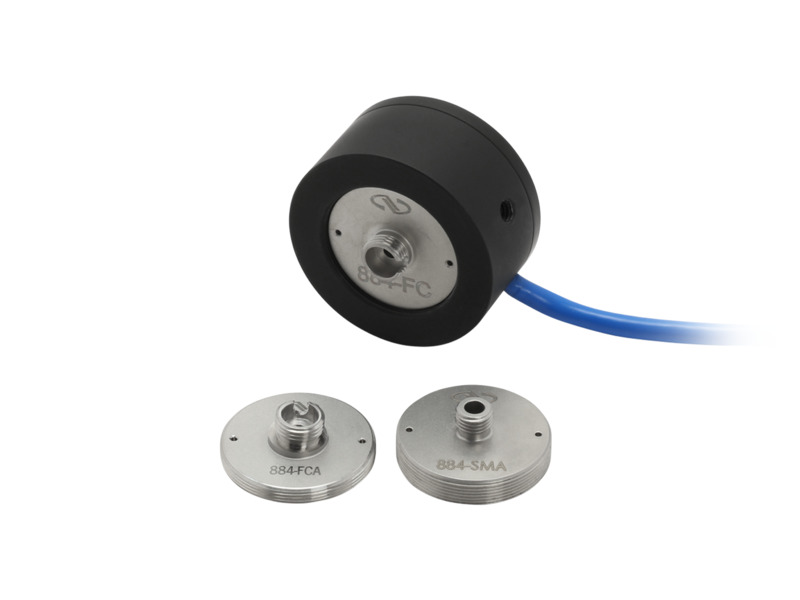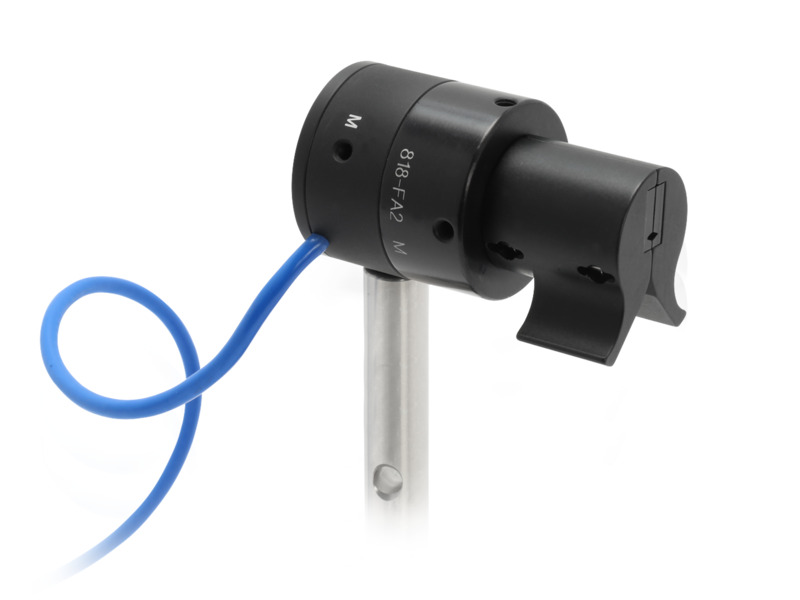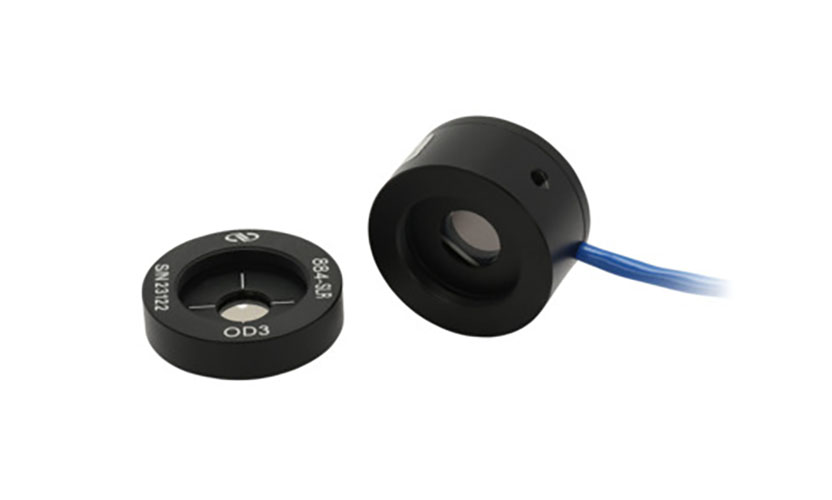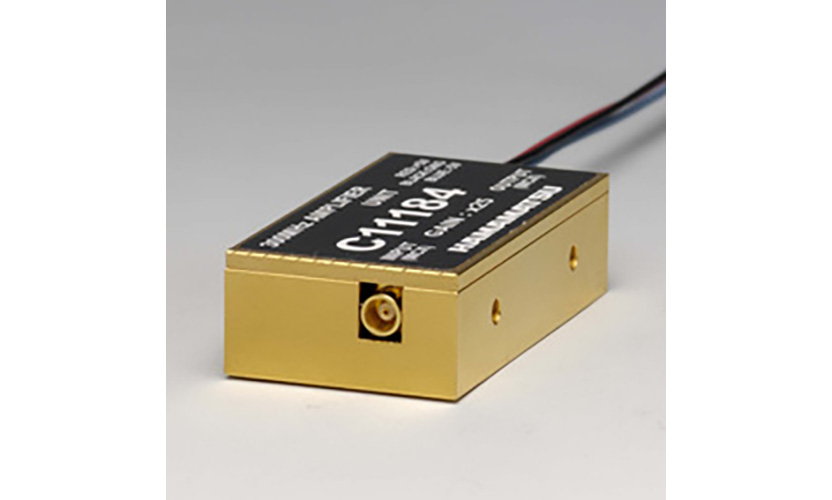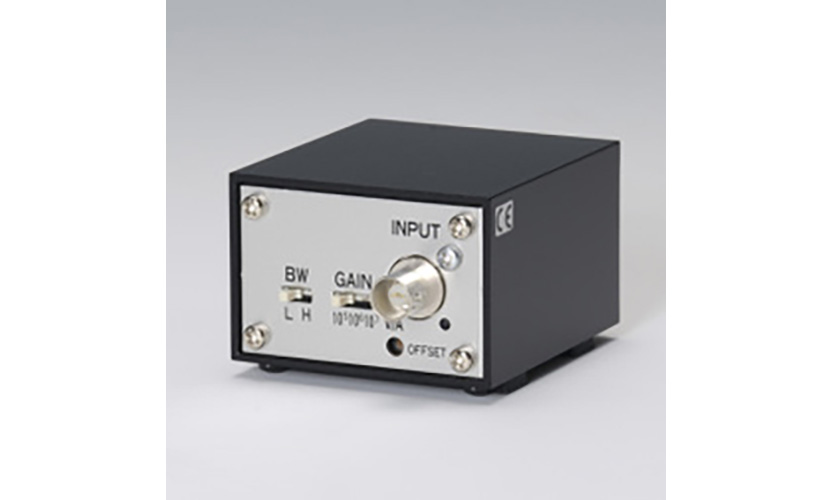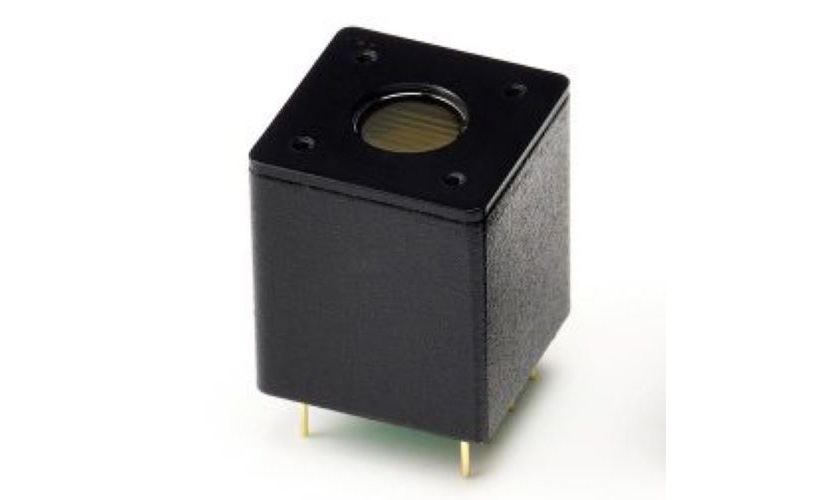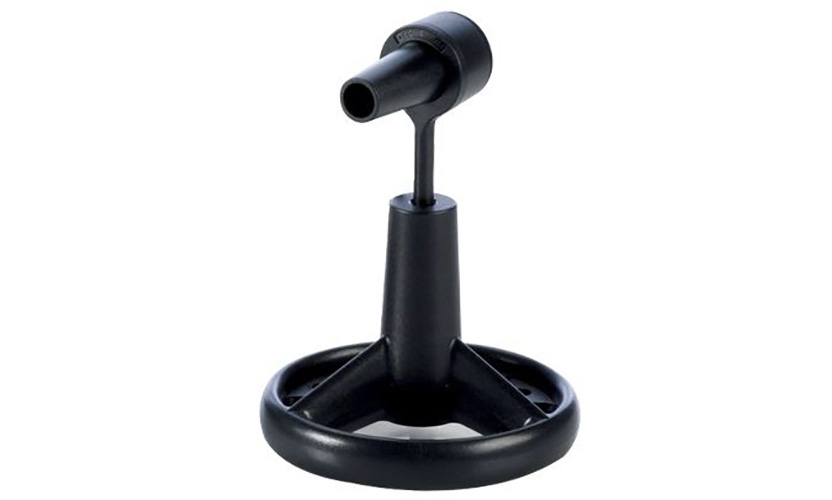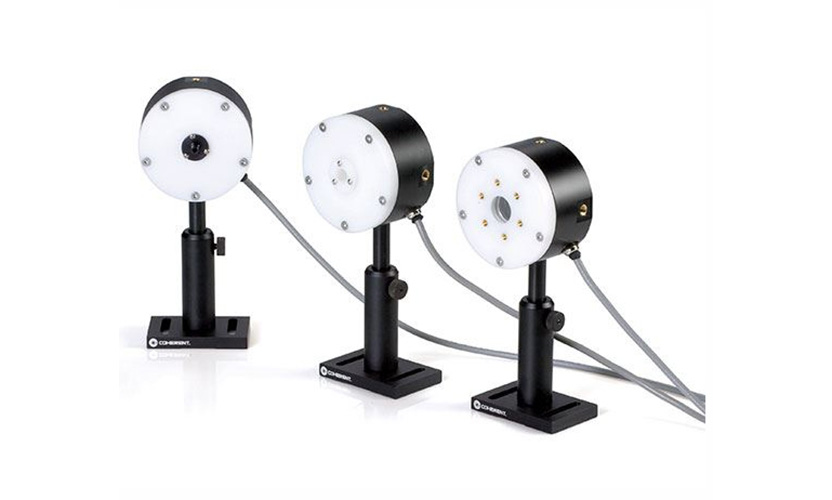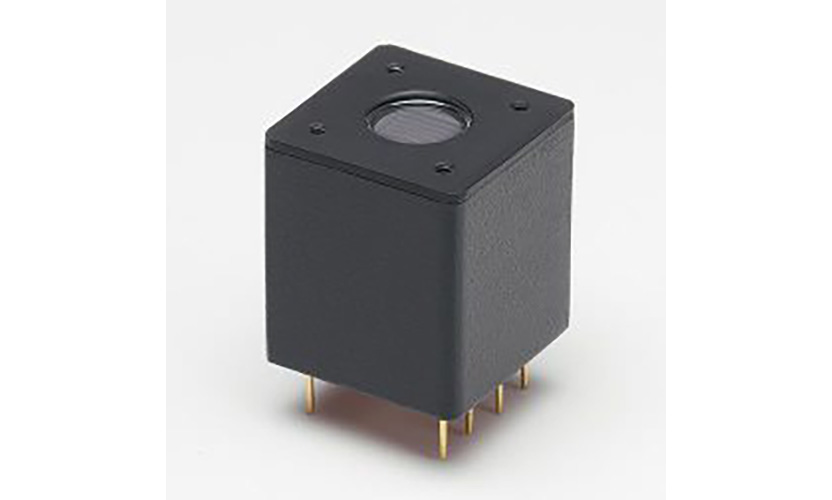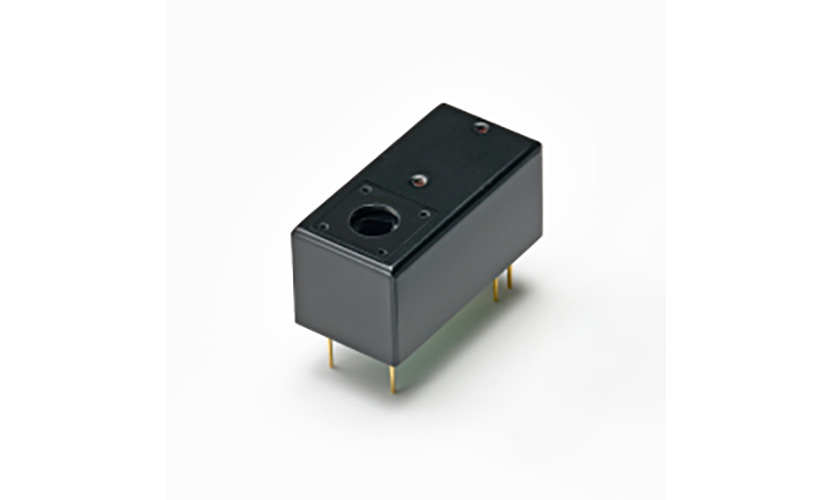Product Model
| model number | spectral range | Maximum measured power1 | Minimum measured power2 |
| 818-UV/DB Optical Power Detector, UV Silicon, 200-1100 nm, DB15 Calibration Module | 200 - 1100 nm | 1500 mW | 20 pW |
| 818-SL/DB Optical Power Detector, Silicon, 400-1100 nm, DB15 Calibration Module | 400 - 1100 nm | 2000 mW | 20 pW |
| 818-IR/DB Optical Power Detector, Germanium, 780-1800 nm, DB15 Calibration Module | 780 - 1800 nm | 2000 mW | 5 nW |
| 818-IG/DB Optical Power Detector, InGaAs, 800-1650 nm, DB15 Calibration Module | 800 - 1650 nm | 2000 mW | 20 pW |
Notes.
- When used with the 1830-R, 1918-R, 1936-R, or 2936-R benchtop optical power meter.
- When used with the 1936-R or 2936-R benchtop optical power meter.
Product Specification
| model number | 818-UV/DB | 818-SL/DB | 818-IR/DB | 818-IG/DB |
| Detector type | Post Mounted | Post Mounted | Post Mounted | Post Mounted |
| Detector Input | Free Space | Free Space | Free Space | Free Space |
| Probe material | UV Enhanced Silicon | Silicon | Germanium | Indium Gallium Arsenide |
| spectral range | 200 - 1100 nm | 400 - 1100 nm | 780 - 1800 nm | 800 - 1650 nm |
| aperture | Ø10.3 mm | Ø10.3 mm | Ø10.3 mm | Ø10.3 mm |
| Sensor Size | 10 x 10 mm | Ø11.3 mm | Ø3 mm | Ø3 mm |
| attenuator | OD3, Threaded | OD3, Threaded | OD3, Threaded | OD3, Threaded |
| Maximum Measured Power | 1500 mW | 2000 mW | 2000 mW | 2000 mW |
| Maximum measurable power without attenuators | 5 mW (200 - 400 nm); 2.5 mW (400 - 600 nm, >1050 nm) , 1.5 mW (600 - 1050 nm) | 4 mW with 1830-R and 1936-R, 2.5 mW with 843-R, 1919-R, and 841-PE-USB | 10 mW (1918-R, 1936-R/2936-R), 1.3 mW (843-R, 1919-R, 841-PE-USB) | 10 mW (1830-R, 1918-R, 1936-R/2936-R), 1.3 mW (843-R, 1919-R, 841-PE-USB) |
| Minimum Measured Power | 20 pW | 20 pW | 5 nW | 20 pW |
| Maximum power density | 30 W/cm2 | 30 W/cm2 | 30 W/cm2 | 30 W/cm2 |
| Maximum power density (without attenuator) | 0.2 W/cm2 | 3 W/cm2 | 3 W/cm2 | 3 W/cm2 |
| Maximum pulse energy | 400 µJ | 60 µJ | 60 µJ | |
| Maximum pulse energy without attenuator | 0.4 µJ | 60 nJ | 60 nJ | 60 nJ |
| linearity | ±0.5 % | ±0.5 % | ±0.5 % | ±0.5 % |
| uniformity | ±2 % over Ø2 mm with attenuator, ±2 % over Ø4 mm without attenuator | ±2 % | ±2 % | ±2 % @ 1550 nm |
| rising time | 3 µs | ≤2 µs | ≤2 µs | ≤2 µs |
| Calibration Module | Removable DB15 Connector | Removable DB15 Connector | Removable DB15 Connector | |
| Connector Type | DB15 | DB15 | DB15 | DB15 |
| Cable length | 1.5 m | 1.5 m | 1.5 m | 1.5 m |
hallmark
Excellent photodiode linearity
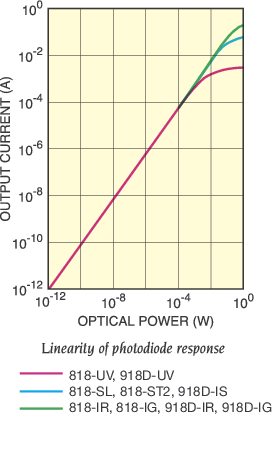
These photodiodes have good linearity over large dynamic ranges. This is ideal for applications requiring high precision measurements down to the pW level, especially when combined with high sensitivity power meters that can accommodate the large dynamic range of optical signals.
Variation of response speed with temperature

A natural characteristic of photodiodes is that their optical response varies with the temperature near the bandgap of the semiconductor material.Newport's 918D series sensors have a thermocouple near the photodiode, which allows specific Newport meters to read the temperature and automatically adjust the response to ensure the most accurate measurements.
Factors affecting maximum measurable power
The maximum measurable power of a photodiode sensor depends on a variety of factors such as the wavelength of the incident light, the saturation of the photodiode's current output, the temperature, the use of an attenuator, and the maximum current input value of the power meter. Newport offers maximum power specifications based on the model of the power meter, with or without an attenuator, as well as the maximum power level with respect to wavelength. With these factors affecting measurable power, it is critical to select the right detector for your application.
Tightest calibration uncertainty
The 918D series includes a full spectral response calibration using NIST-traceable standards, accomplished with high-precision equipment maintained at the Newport Optical Probe Calibration Facility. Rigorous calibration equipment and process controls allow for the tightest calibration uncertainties in the industry. Each probe comes with calibration data stored electronically in the probe's EEPROM. Each probe is accompanied by a calibration certificate and actual calibration curves and data in attenuator mode and no attenuator mode. To maintain accuracy and ensure performance, Newport recommends that photodiode probes be calibrated annually.

Block diagram of detector calibration system
Wide dynamic range (with built-in attenuator)
The unique OD3 attenuation technology extends the calibrated optical dynamic range of our detectors by three orders of magnitude. Our attenuator design provides high damage thresholds and spectral flatness. This wider dynamic range is achieved through the low NEP associated with the photodiodes being used by Newport. For input powers less than 1 mW, we recommend placing the attenuator in the OFF position (0.1 mW for the 918D-UV-OD3R between 200 - 400 nm) to maximize the signal-to-noise ratio. The attenuator has an aperture of 10.3 mm.

Removable OD3 Attenuation Tab
For input powers less than 1 mW (or 0.1 mW for 818-UV/DB between 200-400 nm), it is recommended that the signal-to-noise ratio be maximized by unscrewing the OD3 attenuation tab from the probe.

Precautions concerning detector connectors
The 818 series probes have a BNC connector with a removable calibration module. The /DB suffix indicates a DB15 style calibration module that is directly compatible with Newport's current power meters. Models with the /CM suffix (available offline only at the time of purchase) come with a traditional 8-pin mini-DIN module. the BNC connector is no longer available on the 818-xx model. Simply remove the calibration module when purchasing the 818-xx/DB.
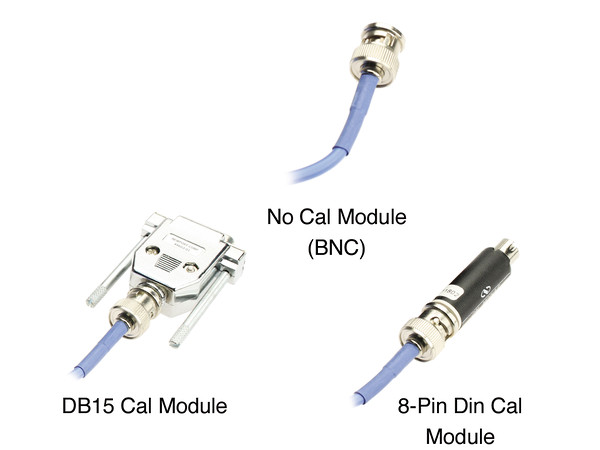
Additional features for BNC connectors
The BNC connector extends the functionality of the 818 series photodiode sensor. It can be connected directly to an ammeter or lock-in amplifier. It also allows the detector output to be viewed on an oscilloscope after first connecting the detector output to a current-voltage preamplifier, such as Newport's model70710 . In addition, the cable length can be extended by connecting another BNC cable.

Fiber Optic Application Adapters
These photodiode sensors can be converted to measure the optical power of a connected fiber or a bare fiber.Newport offers a comprehensive line of screw-in fiber optic adapters to match a wide range of connector types. Our bare fiber holders and adapter holders are designed to hold 250-µm bare fiber without damaging the fiber.

